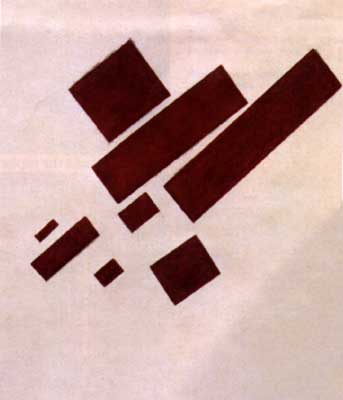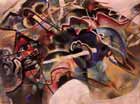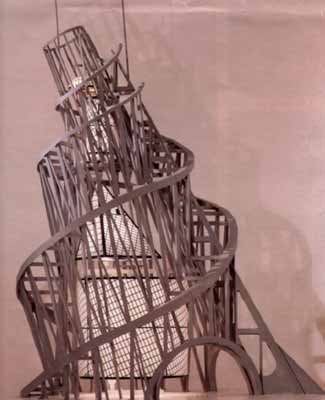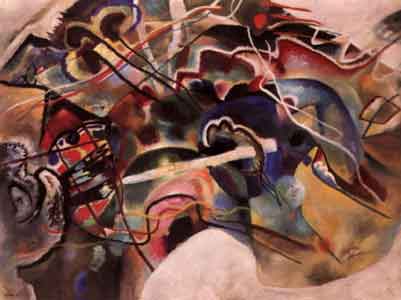Mondrian also took a reductive approach to form, but one with
a tighter geometric orientation and stricter compositional order. Like Kandinsky,
Mondrian was inspired by landscape, but he interpreted it in his earliest abstract
paintings as a series of interlocking vertical and horizontal lines., A principal
member of the De Stijl group - a loose confederation of artists and architects
who attempted to integrate art, design, and architecture with a unified, rigorous
approach to form - Mondrian reduced elements to their purest state in compositions
of geometric order and balance in order to express universal harmony.
However, not all artists who made geometric art were concerned
with spirituality. The Russian Constructivists, who developed a rational, materialist
approach to art shortly after the Russian Revolution of 1917, used geometry as
a metaphor for order in a society ravaged by chaos. In their work, beauty became
subservient to utility, and painting became a superfluous activity, unless it
carried a political message. In the hands of the Constructivists, abstract art
was made from modern industrial materials, with the artist serving as engineer,
and it performed a social, not a spiritual, function. Vladimir Tatlin's Monument
to the Third International (designed 1919-20) exemplifies this technological,
socially oriented approach to abstraction, using a composition of geometric forays
as the basis for a multifunctional government building. Similarly, artists such
as Josef Albers at the Bauhaus - the school founded in 1919 in Weimar, Germany,
by architect Walter Gropius - promoted the integration of art, architecture,
and design within an abstract, geometric idiom that the;y believed was the embodiment
of modernity, universality, and mass production.
The antithesis to this hyperrational view of art was Dada,
a loose-knit movement of writers and artists that flourished in Paris, Zurich,
Berlin, Hannover, and New York beginning in 1915 and 1916. Appalled by the horrors
of World War I and the hypocrisy of Bourgeois society, Dada artists used abstraction
as a form of protest, rejecting conventional representation and beauty as a means
of attacking social norms. Kurt Schwitters, in his Merz collages, for example,
juxtaposed discarded remnants of contemporary commerce, with the aim of destroying
rational, objective logic and celebrating the randomness and absurdity of life.




